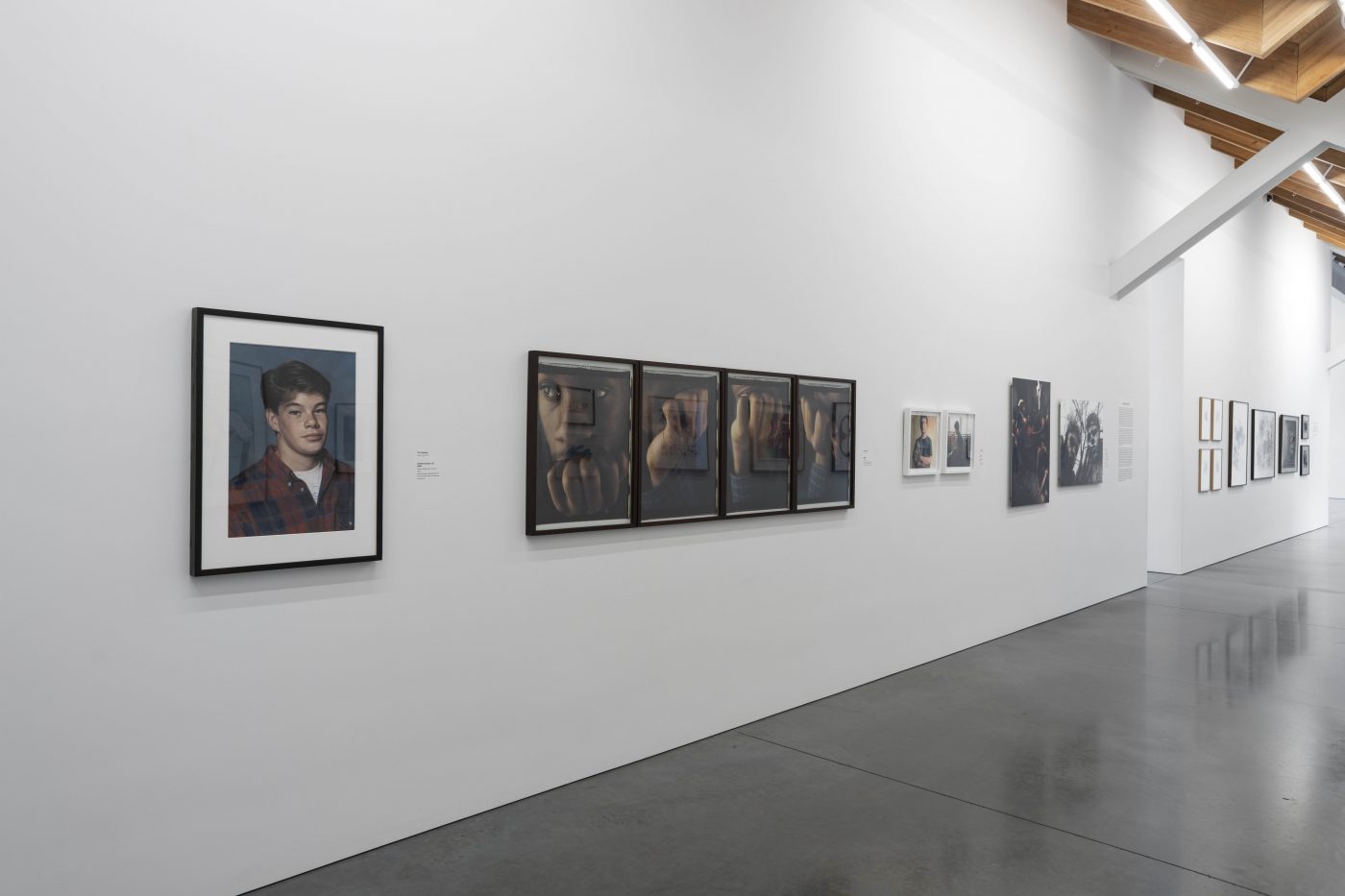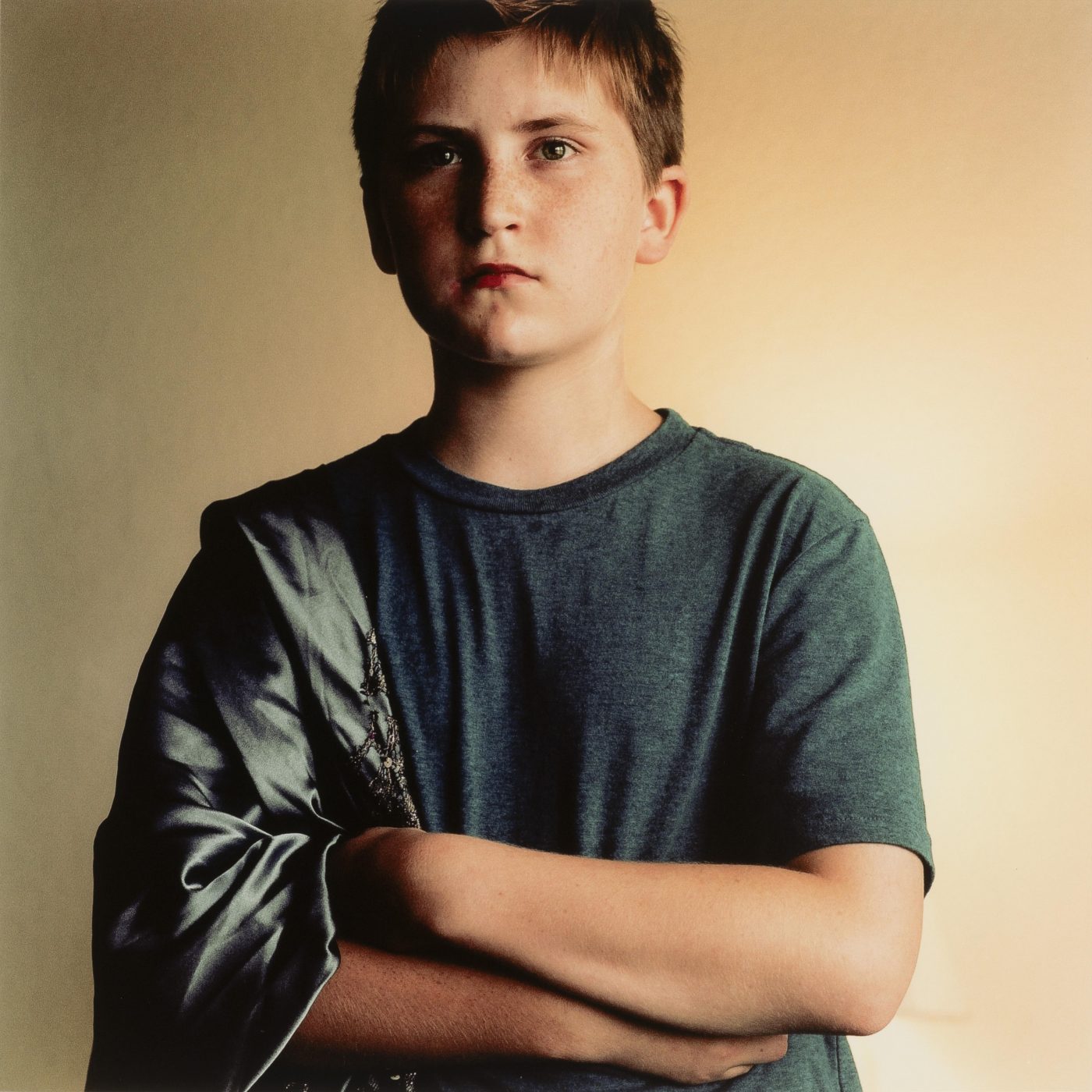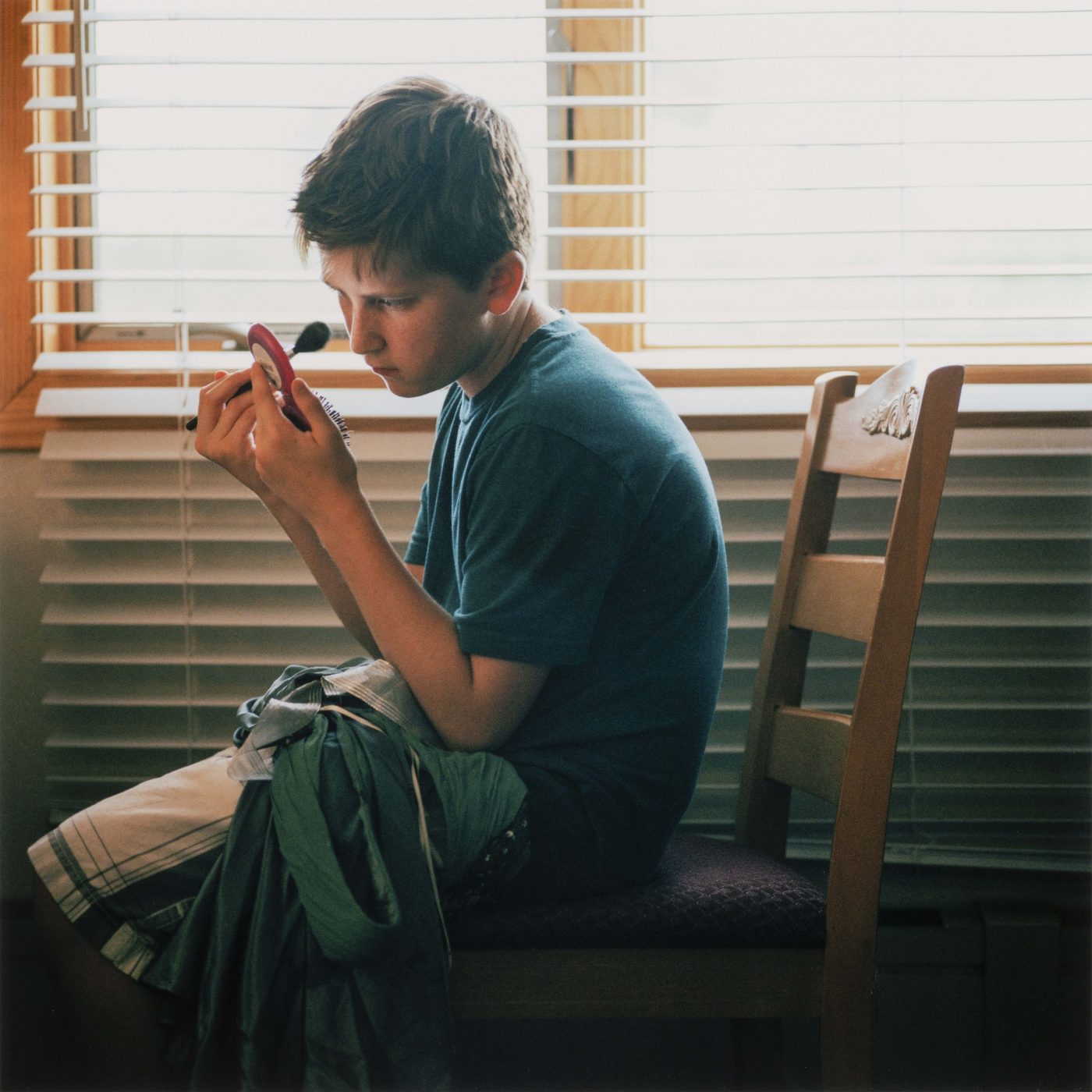Photographer Jeremy Dennis has said that in his art he works towards resolving issues of “indigenous identity, assimilation, and tradition.” A member of the Shinnecock Indian Nation, he looks to traditional narratives and mythologies for inspiration. The Interment of Pogattacut takes up the legend of the Manhasset Sachem (leader) Pogattacut, whose body was carried from Shelter Island to Montauk for burial in 1651. At a stop along the way the chief was laid on the ground—a site that became sacred to Native Americans. Although today this spot is marked only by a historic marker, Dennis recreates the dramatic event, inserting himself into the photograph as both the leader and his followers and bringing to life this vivid moment in Native American history.
Over a decade ago, Lindsay Morris began to document an annual weekend summer camp for gender-nonconforming children and their families. These images reveal the universality of the experience of children on the brink of adolescence—a rite of passage that we collectively share. With a remarkable ability to win the youngsters’ confidence, Morris conveys not only their eagerness and enthusiasm but also their vulnerability and strength. These photographs sensitively open a dialogue about how non-judgemental environments can provide life-changing support. “I’m proud that through my photography I can help illustrate this unique journey.”
During an artist’s residency at the Parrish Art Museum, Dawoud Bey worked with students from local high schools as part of his ongoing project to bring young people and museums together, making institutional spaces more accessible to their communities. Working in a studio at the Museum, Bey involved the students in shaping their own representations. The resulting large-scale, multiple-image photographs are powerful expressions of the students’ individual identities, which are still being formed and negotiated. Bey describes the resulting composite photographs as a collaboration. In this portrait of Anthony, Southampton High School senior, Bey focuses on the young man’s thoughtful yet guarded expression and the gesture that hides his face.
Tim Gardner explores a specifically American middle-class world of masculinity and the photographic conventions used to document it. In a series of pastels, he meticulously renders a copy of the staged studio portrait photographs taken by anonymous professionals for school yearbooks–here a recreation of his own 10th grade high school photo. His gaze is as buttoned-down as his plaid flannel shirt, concealing as much as it reveals about his emerging construct of identity.





